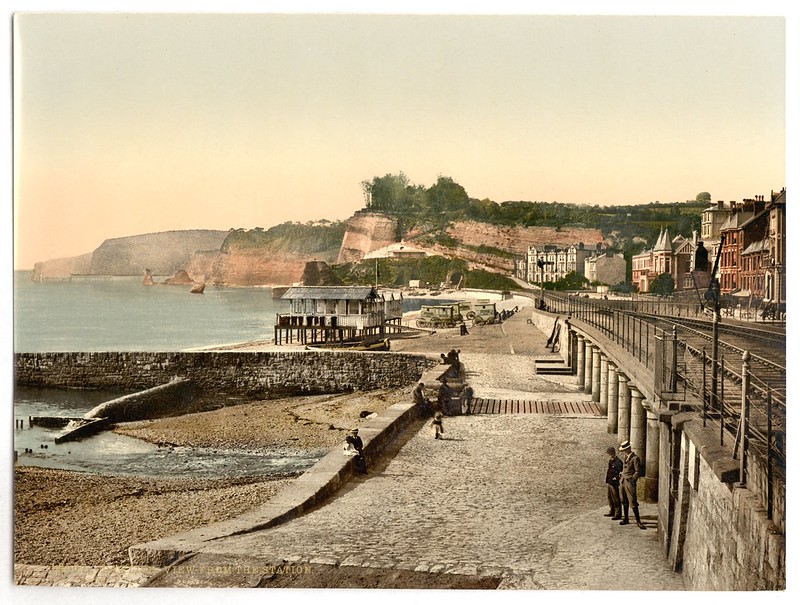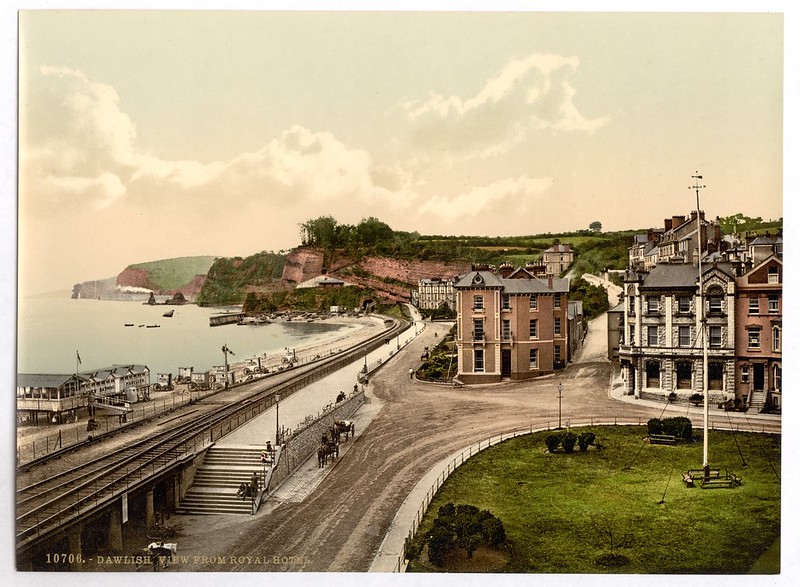-
Posts
11 -
Joined
-
Last visited
Content Type
Profiles
Forums
Blogs
Gallery
Events
Exhibition Layout Details
Store
Posts posted by LesG
-
-
I recently came across a stash of UK photos from the Detroit Publishing Co on Flickr. Here are some from Dawlish, thought to be in the 1890s:-
From station, Dawlish, England-LCCN2002696649 by Fæ, on Flickr
From Royal Hotel, Dawlish, England-LCCN2002696650 by Fæ, on Flickr
I recommend clicking through to Flickr and looking at the full size ones - the detail is amazing!
Hi Guys,
If you look at the first two photos you can see the long sleepers from the broad gauge track which was cross sleepered broad gauge before conversion so the chairs and rails would have been moved closer together.
This means the photos were taken after the gauge conversion in May 1892.
The long sleepers would have been replaced when time allowed maybe within 1 to 2 years.
Best wishes,
Les.
-
Hi Granitechops,
Just found this on you tube, build yourself one and have fun on the rough ground:-
If you use the links you can probably find many variations on a theme.
Best wishes,
Les.
My dear lady who rides tandem behind didn't think much of my idea of a FORKLIFT on the FRONT
so I think the idea of a grab above her head would be a NO-NO




-
 3
3
-
-
As a non-driver but frequent navigator I have experienced drivers who insist on relying totally on the navigator and ignoring road signs, apparently deliberately! As in "we've just passed a sign to the museum" (which was separate from the road sign I was looking at). Ex-SWMBO also insisted on being told which exit at every roundabout even on major roads where our destination and road number were clearly signed as straight ahead.
Hi Pete,
Having been a driver for many years my experience of navigating the South Circular Road in London in the early 1970's was on my own I completely lost the route as I couldn't navigate & cope with the density of traffic {always in the evening after rush hour on a journey from BAOR to Wiltshire} if however I had a friend navigating by atlas & road signs there was never a problem even in the day time as it left me free to cope with the traffic {horrendous} being told which exit to take on a roundabout was a god send.
To sum up a good navigator is worth there weight when it comes to traveling around as it helps the driver enormously to stay on the correct route.
Even today my wife & I take turns with the driving and navigation which relieves the stess on both of us.
Sorry if this sounds like a lecture it's not meant to be just a drivers point of view.
Regards,
Les.
-
Hi Giles,
Thank you for the info, I won't be able to have any road vehicles as my time period is pre 1900 and I don't fancy fitting radio control to an early traction engine.
When I return from holiday I shall order the parts I need from the Deltang site and set it up with some ordinary AAA batteries in an LNER Smplex petrol shunter which looks like a garden shed on wheels.
Then if successful I can then sort out rechargeable batteries.
Thank you once again,
Les.
-
Hi Guys,
I have been following this thread with interest as I want to use R/C for my locos, for my models as I work in 7mm the bodies will all be etched metal which may reduce the effective range at which I can work, Ideally I would need up to twenty feet operating range but could get by with ten feet.
A question:-
Are the body parts of the vehicles all metal & if so have you noticed any effect to the operating range is the ranged when testing without the body reduced when testing with the body fitted.
Les.
-
If I remember correctly there was an article in Railway Modeller or Model Railway Constructor a long time ago. the rael village is just north of the A39 between Minehead & Porlock, probably not railway country. If you can find an index to one or both magazines you may be able to track down the article which hopefully will have the dimensions.
Regards,
LesG.






Washout at Dawlish
in UK Prototype Discussions (not questions!)
Posted